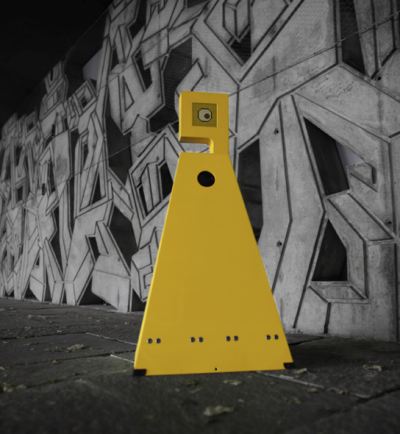New Technology Refreshes Museums
Posted August 21, 2014
Many museums and other cultural institutions are developing new programming and experiences that offer deeper engagement using technology. We are currently in the process of creating the Edward M. Kennedy Institute, which will be a first-of-its-kind interactive experience. While developing a tech-driven, cultural and learning experience, we have been thinking a lot about how other museums use interactive technology to increase visitor engagement. We found a few examples to share.
Last week, from August 13 to 18, London’s Tate Britain unveiled four robot docents that could be controlled by users via the web. The robots are equipped with cameras, spotlights, and sensors. They beam footage to a dedicated website where audiences from around the world can watch the spectator-guided tours as they happens. The robots only come out at night, so the presentation is an alternate view of the museum: empty, dark, spotlit, and non-linear. There are even online art experts available to answer questions about the art encountered as the robots virtually roam the hallways. Below is the teaser video from the website.
The Tate received a great deal of press for the robots. They appear smart and agile, and the footage is interesting in its own right. But the Tate was not the first to employ robots. In 2012, the Technical Museum in Malmo, Sweden launched BIB, a line-following robot that worked as tour guide. The one-eyed robot led guests around the exhibits, talking about what was on display. BIB was voiced by a Swedish comedian and could pardon herself if she jumped into a patron. She even asked for help if she happened to fall off her track.
In comparison to the virtually controlled robots at the Tate, BIB is lower tech, but the idea is similar. Give people a technology-mediated experience at a museum to reveal more about the institution and create a new audience experience. Both robots fall into the institutions’ goal of pushing the boundaries and innovating in the cultural space.
The promotion of technology in museums has even been raised to the regional-wide level. The European Union has officially recognized that the region’s museums need some assistance engaging audiences in a tech heavy world. Visitors to museums across Europe may soon be able to shape their own cultural experience before leaving home. With mobile, augmented reality, and geo-localized technology, an ordinary museum visit can be turned into an interactive, storytelling experience. The EU investment takes the form of the ‘Cultural-Heritage Experiences through Socio-personal interactions and Storytelling’ (CHESS) App, which aims to make culture more engaging.
Dr Olivier Balet from DIGINEXT, the French company coordinating the project, states, “A guided tour is a linear experience where the visitor remains rather passive. With CHESS the museum visit is likened to a gaming experience, making visitors active and engaged in cultural heritage. Visitors are informed but also challenged, teased, and entertained. This is vital to hold the interest of visitors, in particular the younger generation who are immersed in games on their consoles, smartphones and tablets.” The CHESS app will help visitors tell a different story, focused on exhibits that match their interests. This initiative will role out starting this summer, after a six-month trail period last year.
All of this innovation in the museum space sets the stage for the next era of development in museums large and small. Interactivity, deeper engagement, and personalized experiences are now within reach of cultural institutions. They can be built into the museum’s DNA or added onto to create compelling experiences for their audiences. Either way, the technological enhancements breathes new life into institutions that are struggling to keep up with an information-saturated age. By reframing and realigning the experiences that visitors have, the institutions are forming lasting relationships with new and growing audiences. And creating true relationships between the museum and their audience is the goal.



Join The Conversation